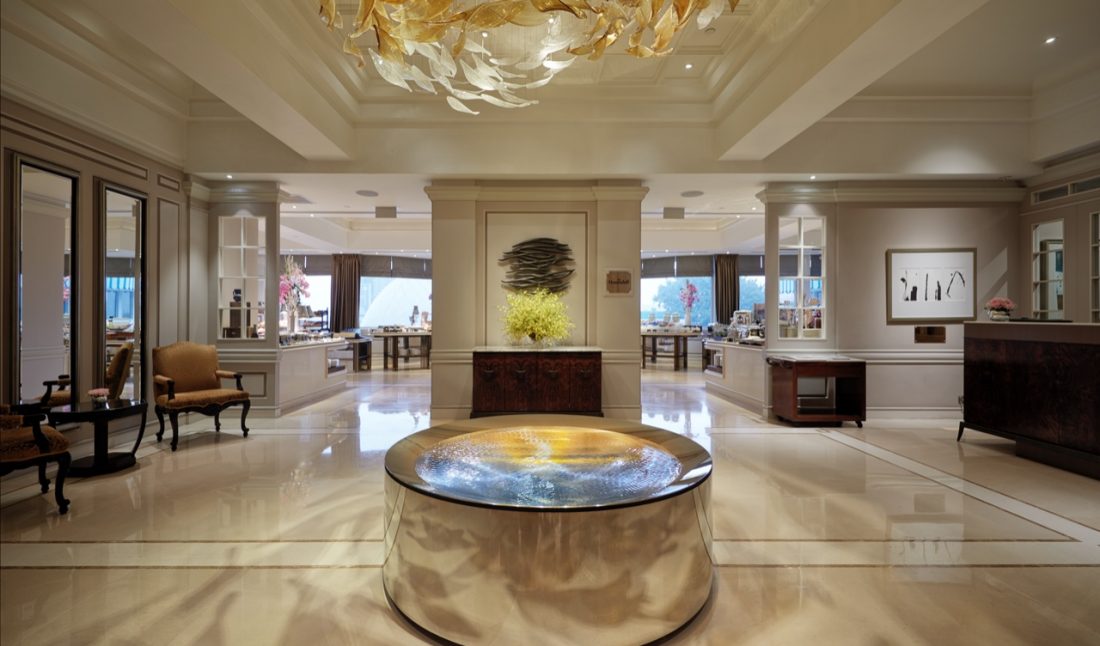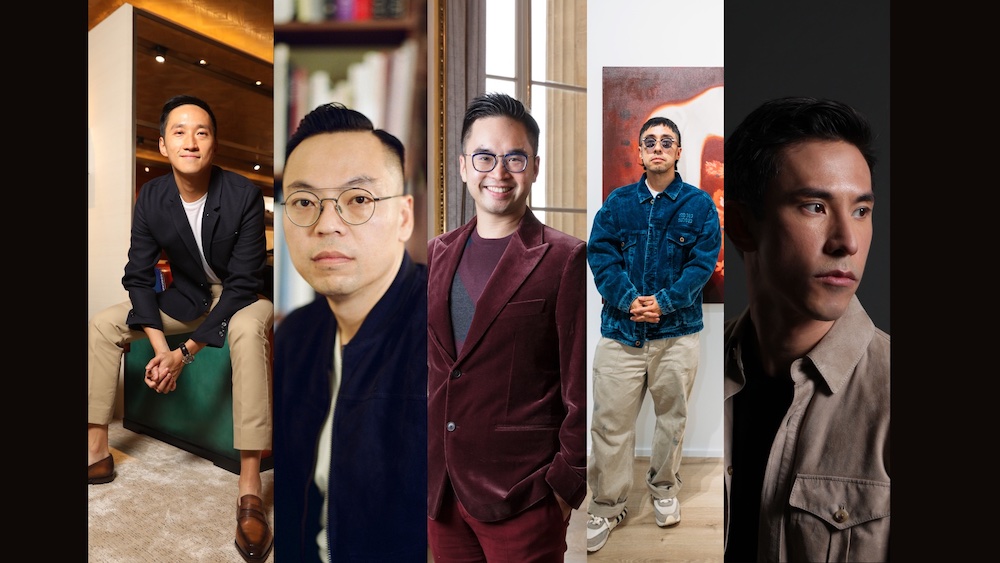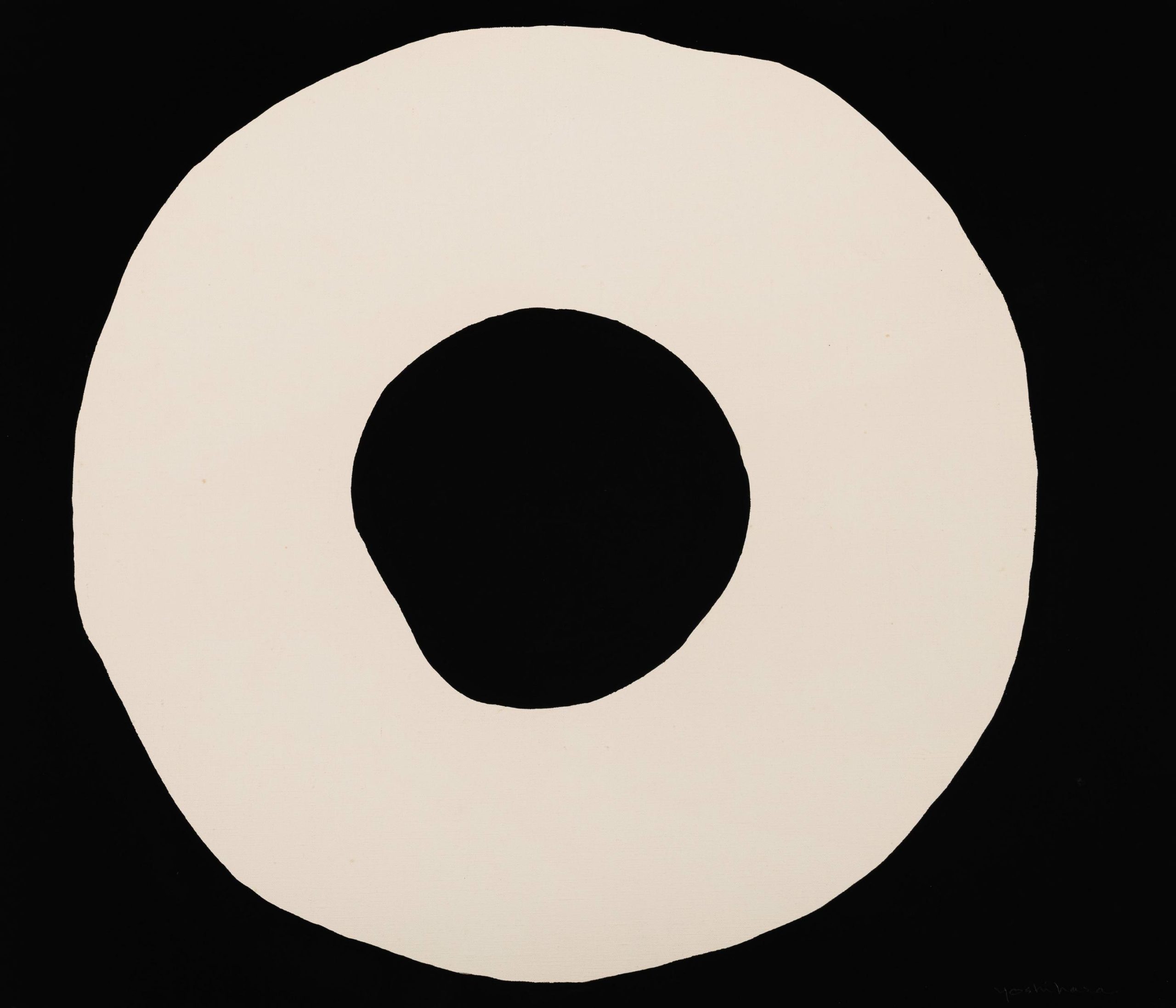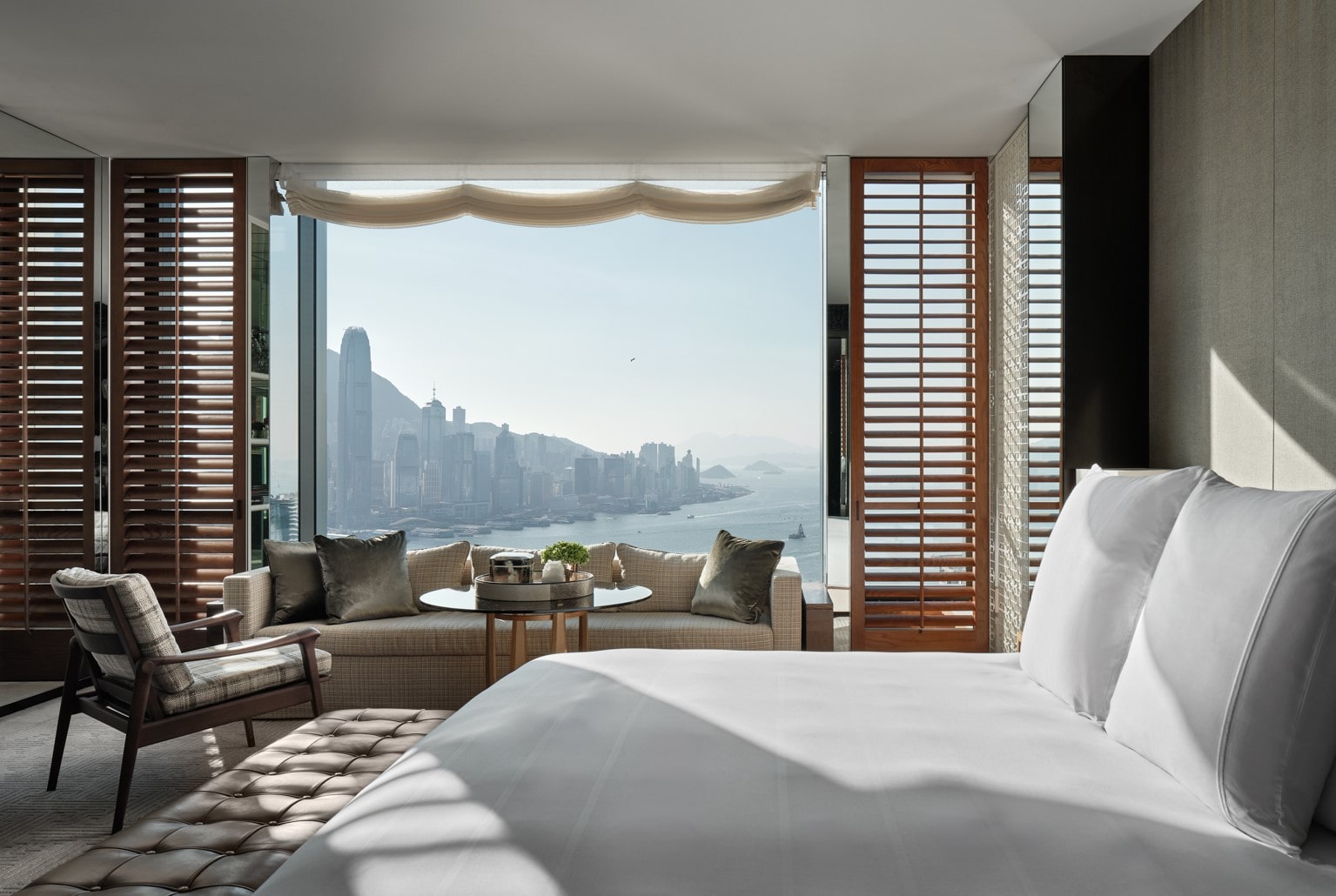The commission-based art program Art in Resonance, spearheaded by co-curators Bettina Prentice and Isolde Brielmaier, returns to The Peninsula Hong Kong this week with the work of Lachlan Turczan, and others. First created in 2019 in collaboration with The Peninsula Hotels, it supports new public work from emerging and mid-career artists—first at The Peninsula Hong Kong, then at other hotel locations around the globe.
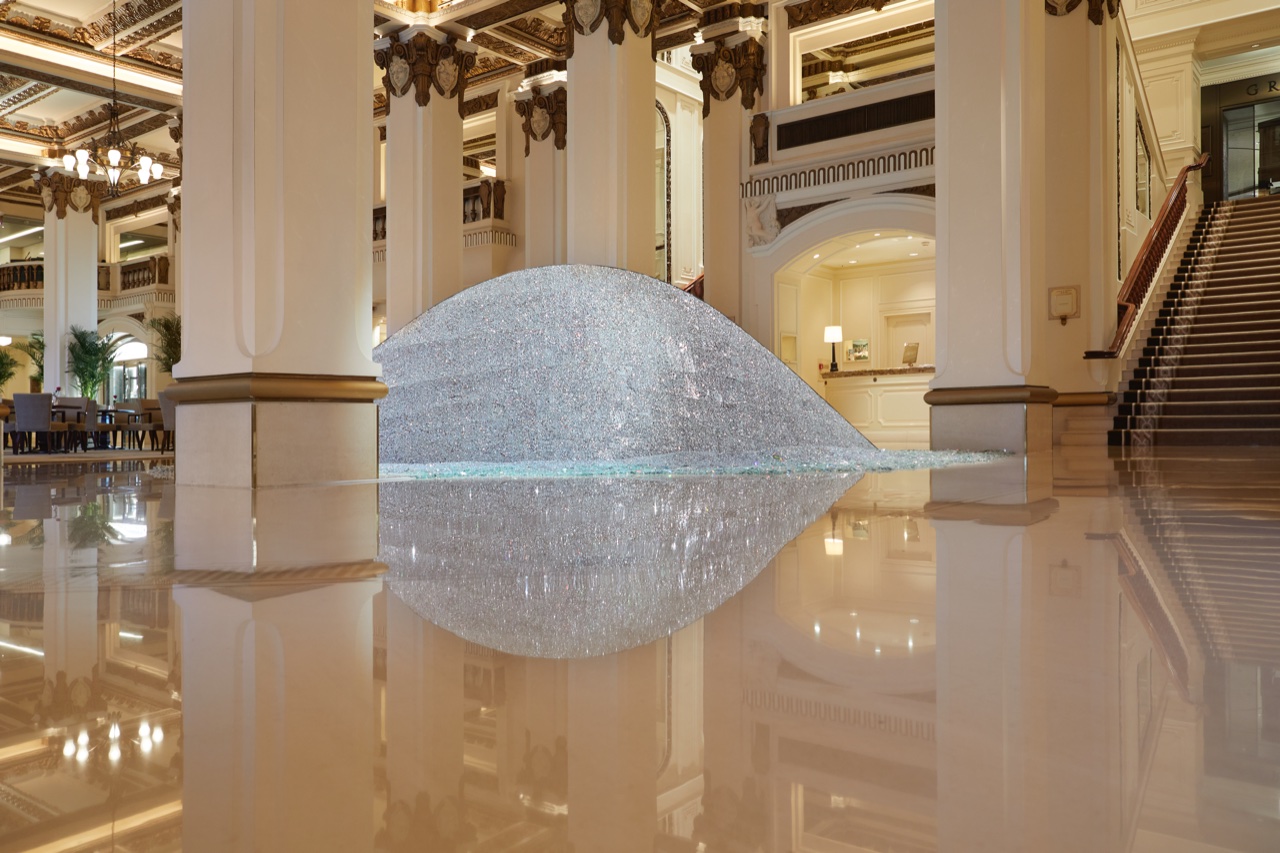 Elise Morin, SOLI, courtesy of Art in Resonance.
Elise Morin, SOLI, courtesy of Art in Resonance.
“We are thrilled to bring back Art in Resonance, which has allowed our guests to engage with some of the world’s most innovative artistic minds,” said Gareth Roberts, Deputy Chief Operating Officer of The Hongkong and Shanghai Hotels, Limited, The Peninsula’s parent company. “It is particularly exciting to relaunch the program in Hong Kong, a city that has experienced such a resurgence in vitality and creative energy.”
Adding to the rich cultural tapestry of Hong Kong and its dynamic visual appeal, this year’s bold curation features work by the local artist Kingsley Ng, as well as from the international talents Elise Morin, Saya Woolfalk, and Lachlan Turczan.
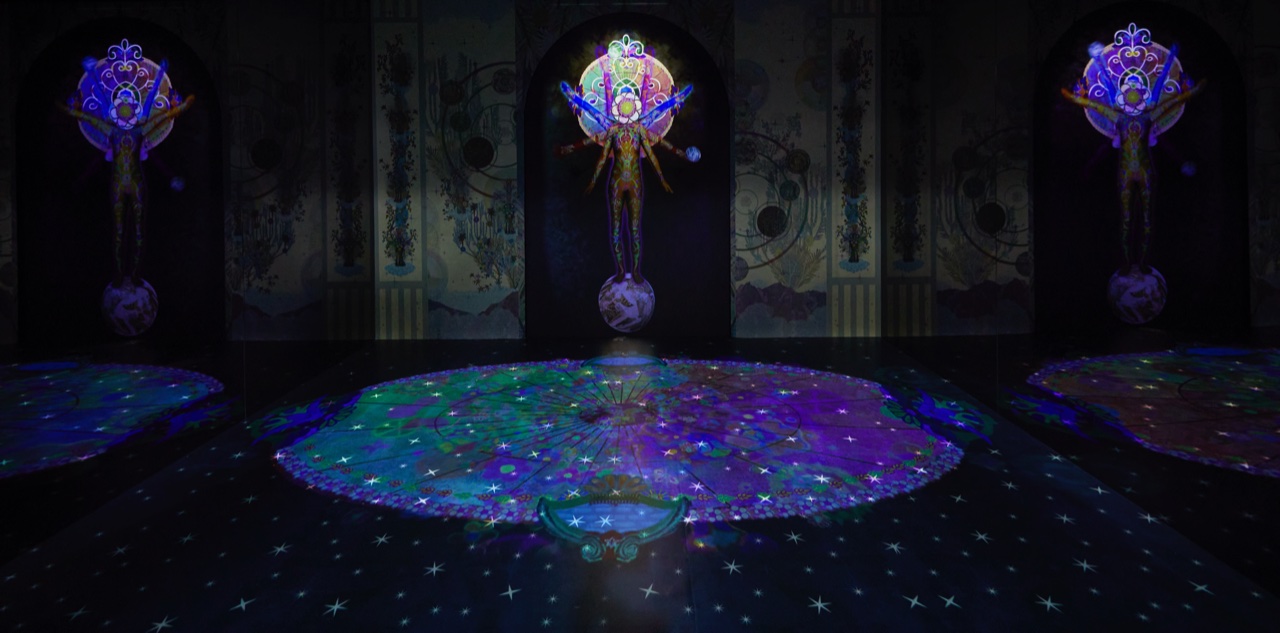 Saya Woolfalk, Visionary Reality Portal, courtesy of Art in Resonance.
Saya Woolfalk, Visionary Reality Portal, courtesy of Art in Resonance.
Ng’s sculpture Esmeralda, appears above the hotel’s iconic façade, “undulating between the physics of gravity and the buoyancy of air,” as he artist stated. Named after one of Italo Calvino’s locations from his 1972 fiction novel Invisible Cities, the installation aims be in dialogue with Hong Kong itself.
Morin’s work, entitled SOLI, is an expanded version of the artist’s first iteration, originally commissioned in 2019. Resembling a whale at the ocean’s surface, it speaks to the material burden of objects in society, now featuring an additional 4,000 crushed CDs, which were damaged according to the security grade of their content. Woolfak’s piece, Visionary Reality Portal, also first debuted in 2019, and provides a portal for meditation. Housed within a purpose-built room on street level, the multi-sensory video installation showcases a colorful, kaleidoscopic artwork.
“Giving artists like Elise Morin and Saya Woolfalk the freedom to further develop their pieces is one of the tenets of the Art in Resonance program,” said Prentice.
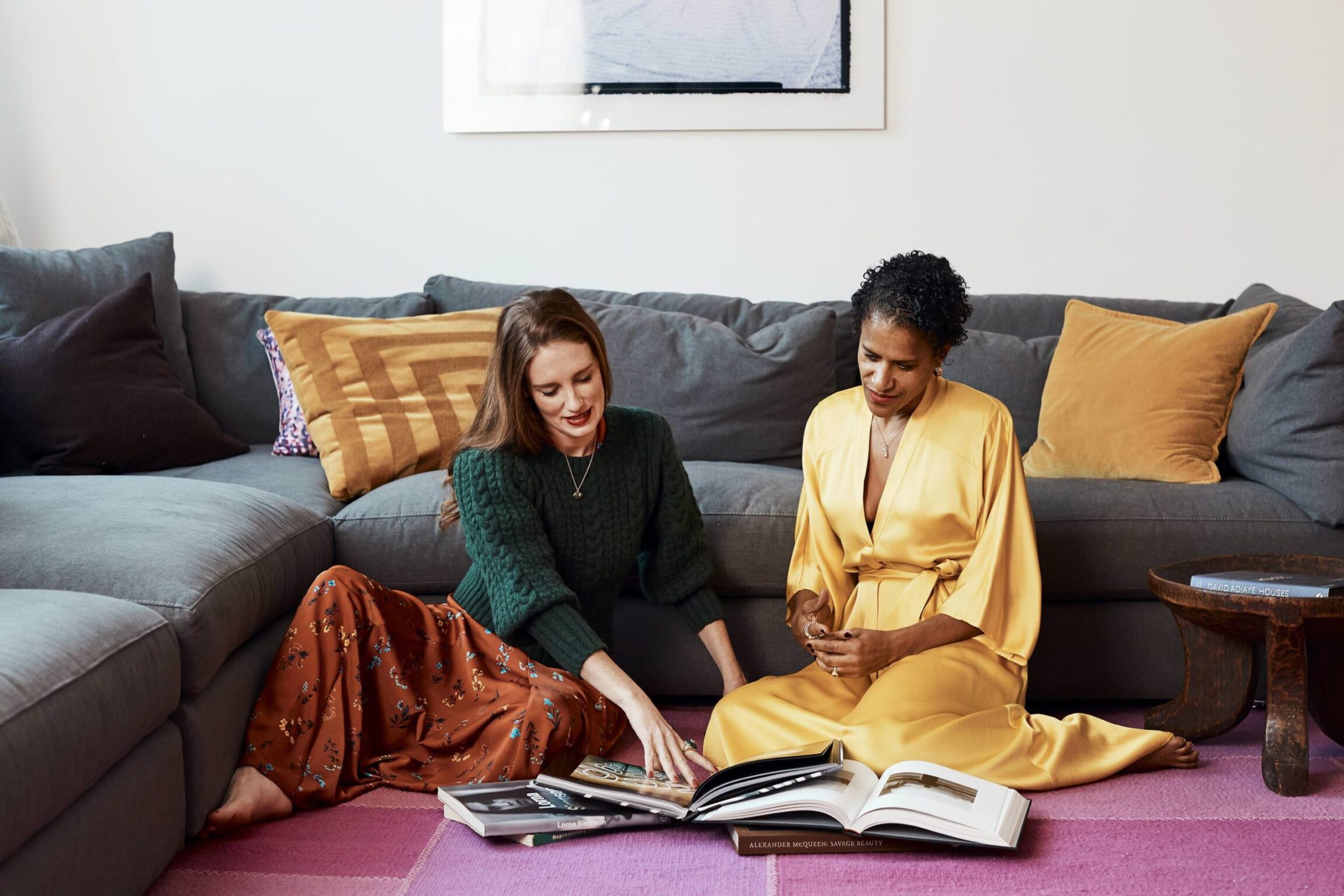 Bettina Prentice and Isolde Brielmaier.
Bettina Prentice and Isolde Brielmaier.Photo by Weston Wells.
Turczan’s latest creation, a kinetic sculpture named Harmonic Resonance, reveals a mesmerizing visualization of sound. With an invitation to viewers to engage, it features a parabolic mirror and a shallow pool of water shaped by choreographed low-frequency tones. These infrasonic tones create oscillating patterns on the pool’s surface—some even in stop-motion.
In celebration of Art in Resonance’s return, Whitewall spoke with Turczan about how his work with sound has evolved, and to Prentice about spearheading this year’s edition.
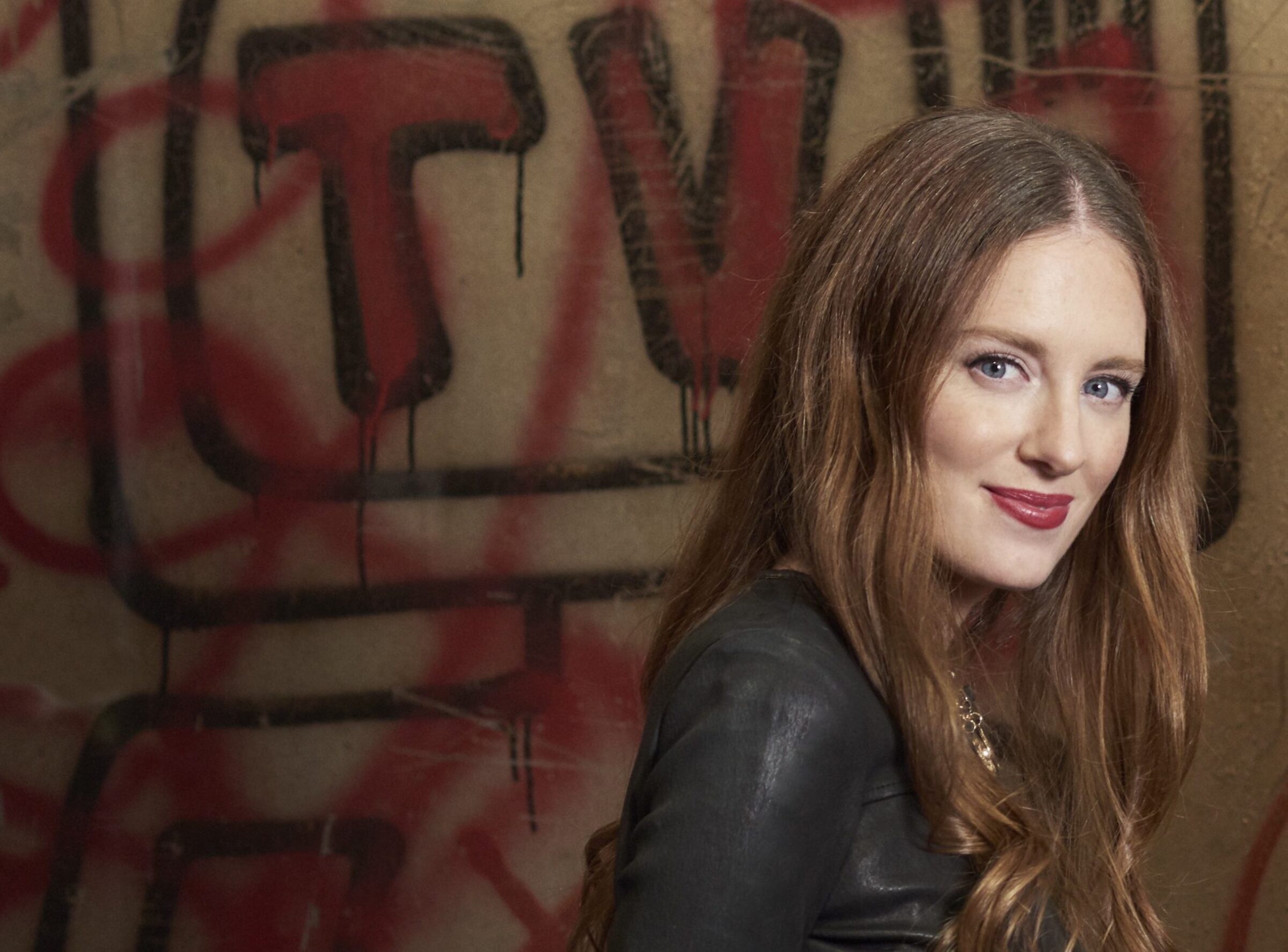 Bettina Prentice
Bettina Prentice
WHITEWALL: “Art in Resonance” is returning this year after a hiatus brought on by the pandemic. How does it feel to return to The Peninsula with such an important commissioned-based program?
BETTINA PRENTICE: We feel so energized and honored to provide a platform for these artists to explore new ideas, methods, and materials. Thelma Golden, who is doing a culture talk with Saya Woolfalk at The Peninsula Hong Kong on Sunday, said to me recently that AiR seems to allow artists to imagine themselves in tracts that are wider than those they typically have access to. I thought it was such an elegant way to describe the program.
WW: The recent Hong Kong commission supports work by the local artist Kingsley Ng, as well as international artists Lachlan Turczan, Elise Morin, and Saya Woolfalk. Why did you select these artists?
BP: Isolde and I first approached Kingsley almost 5 years ago. We’d both been transfixed by a project he did with Art Basel Hong Kong in 2017 called Twenty-Five Minutes Older in which he transformed two trams into camera obscura. It was such a thoughtful and poetic project – we knew we wanted to engage him about a commission for The Peninsula Hotels. Kingsley’s monumental kinetic sculpture for Art in Resonance is the most ambitious project he has done to date. It is composed of enormous ribbons 45 meters in length that are each controlled by motorized winches. The movement is meant to represent the tides that have carried travelers to Hong Kong over the centuries. The work takes its title from Italo Calvino’s 1972 novel Invisible Cities—the fictional city of Esmerelda—one of the infinite routes.
WW: The Peninsula is the official hotel partner of Art Basel Hong Kong. How does this project expand upon the hotel brand’s dedication to contemporary art at large, and elaborate on its ethos of innovation?
BP: The Peninsula devoted itself to the artists in the program with absolute dedication and commitment to new ideas. It is a ethos that they share with Art Basel Hong Kong. The mixologist from their incredible restaurant Felix has also created a special cocktail menu at the Collector’s Lounge of Art Basel Hong Kong inspired by the four installations in the exhibition.
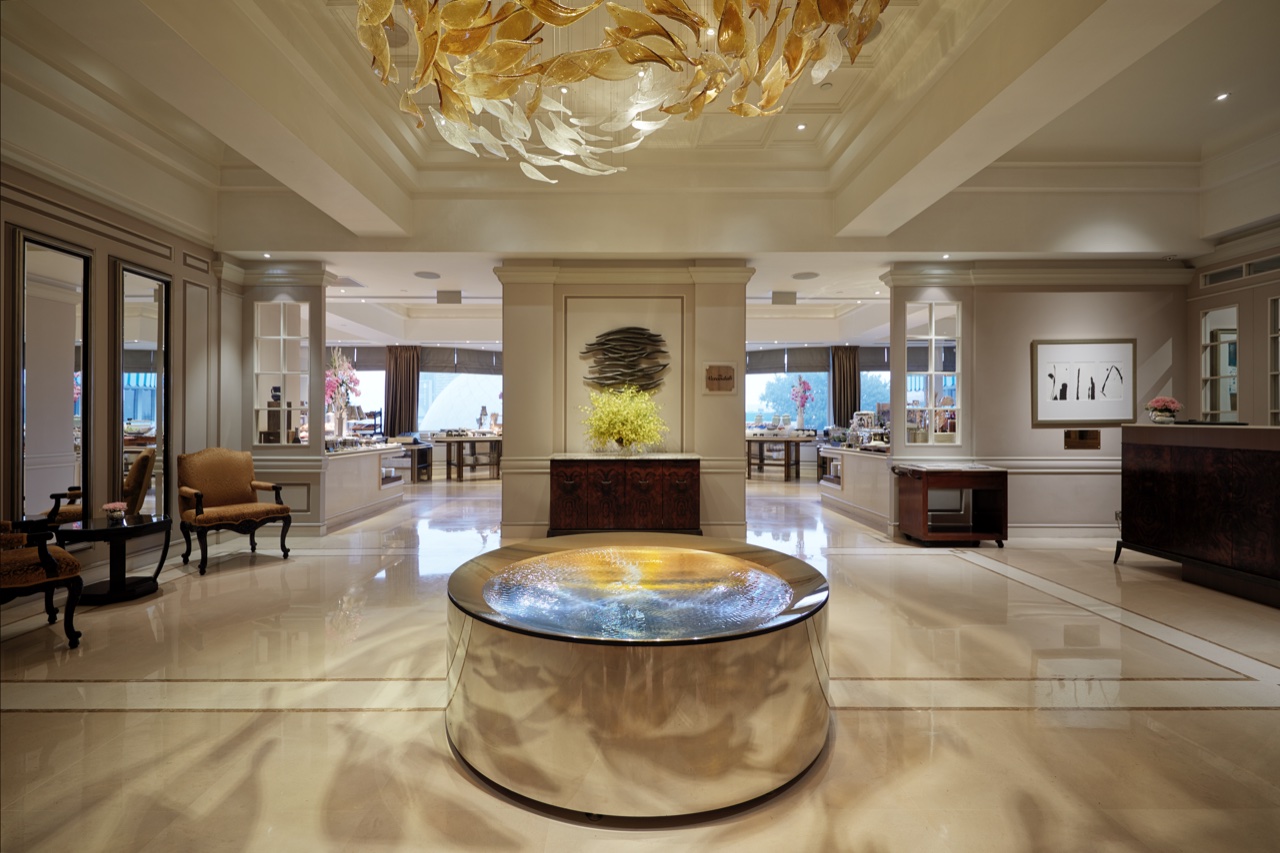 Lachlan Turczan, Harmonic Resonance, courtesy of Art in Resonance.
Lachlan Turczan, Harmonic Resonance, courtesy of Art in Resonance.
WW: Lachlan, what was the starting point for Harmonic Resonance?
LACHLAN TURCZAN: Harmonic Resonance is a continuation of my Resonance series, artworks that present water as liquid sculpture capable of slowing down light and sound. I think it’s a perfect match for The Peninsula’s ‘Art in Resonance’ program, which celebrates art practices that reverberate with audiences outside of traditional fine art contexts.
WW: How was the work made?
LT: Harmonic Resonance is made using mirror-polished stainless steel. A pool of water sits within this parabola, forming a liquid lens to catch ambient light in a series of cascading reflections between the mirrored surface and the underside of the water. Low, infrasonic tones emanate from within the vessel and form cymatic patterns on the water’s surface.
WW: This work elaborates on your practice of exploring water, light, and sound through immersive experiences and kinetic sculptures. How did you get your start in this medium? Why was it something you initially wanted to explore?
LT: I set out with the intention of sculpting and shaping light. Having grown up in Southern California, I was deeply inspired by the California Light and Space movement that was pioneered here in the 1960s. But rather than using LEDs or other conventional ways of shaping light, I began looking at the natural world for inspiration in search of a material that was inherently optical and luminous. Water felt like the perfect medium, as it constantly reflects and refracts light in myriad ways. This led me to the study of cymatics, the science of vibrational phenomena through liquids. I have spent the past decade refining an art practice that follows a simple, natural algorithm: sound shapes water, water shapes light.
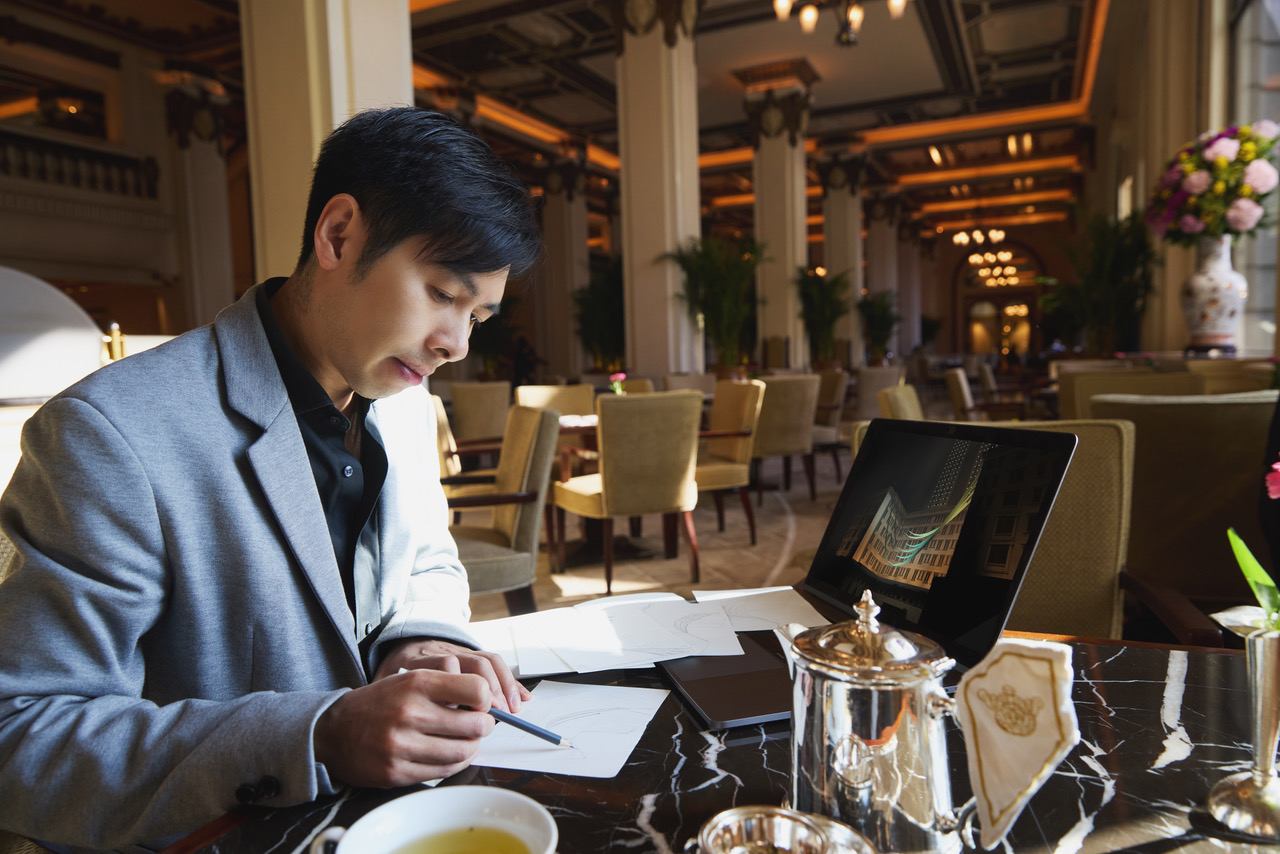 Kingsley Ng, courtesy of Art in Resonance.
Kingsley Ng, courtesy of Art in Resonance.
WW: How has the meaning of your exploration in this field evolved?
LT: My initial intentions for creating my artwork came from a desire to frame water as a liquid sculpture. What has become clear to me now is that water is itself a vessel, just as much as the container it is poured into. Water holds energy—light and sound become suspended in water like insects in amber. It is this arresting of energy, holding it still long enough for audiences to apprehend these phenomena of light and sound, that I have realized is the common thread in my work. This might be the most concise statement of my art practice: to visualize unseen, previously imperceptible phenomena and bring them into our lived experience.
WW: What about visualizing sound is inspiring to you?
LT: Sound is only one small aspect of vibrational phenomena. Providing real-world experiences of these oscillating forces, from which arise natural patterns that are mirrored everywhere in the world around us is the most exciting aspect of my practice. I love how audiences might look at my work and see a pool of water as a distant galaxy, a microscopic amoeba, a blooming sunflower or a coral reef. This pareidolia tendency for humans to find recognizable narratives in chaotic natural patterns is something that I want to explore further. That point where our perceptions interface with the outside world is where all the interesting things start cropping up.
WW: Harmonic Resonance visibly shows the viewer that sound never stops moving, its waves are continuous. Does this feel symbolic to you?
LT: Absolutely. It’s a never-ending process of discovery.
WW: What message do you hope this will share with viewers in Hong Kong?
LT: To visualize unseen, previously imperceptible phenomena and bring them into our lived experience.






